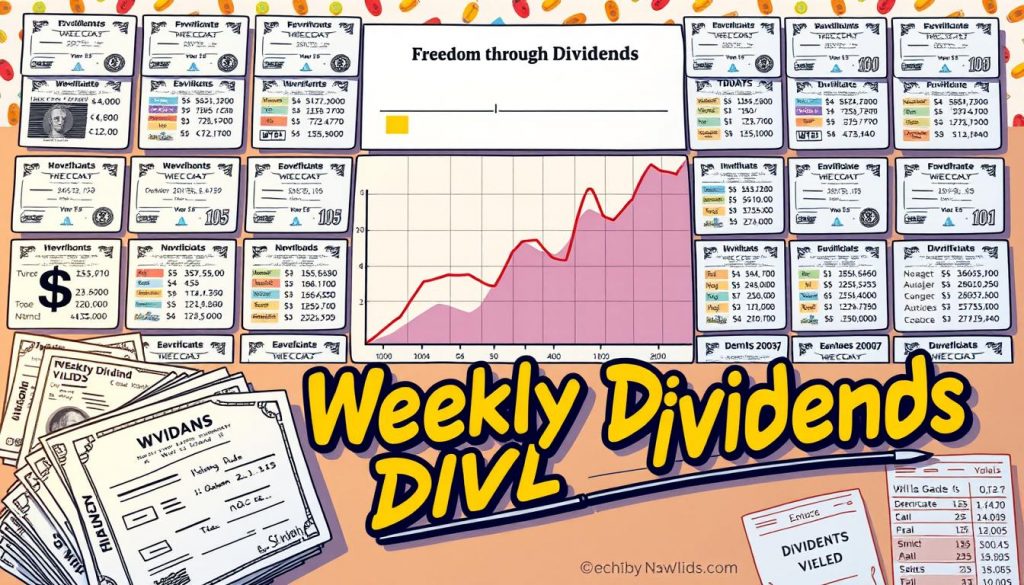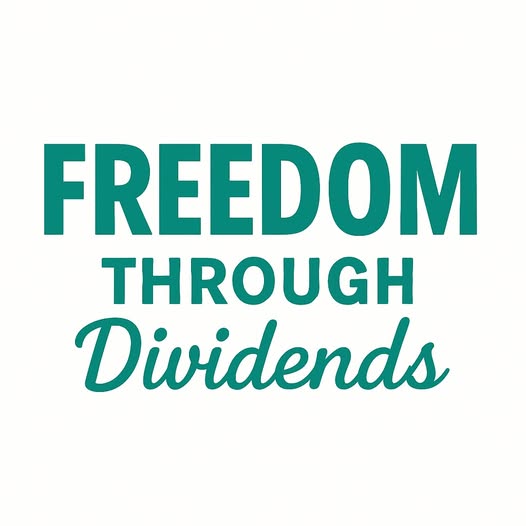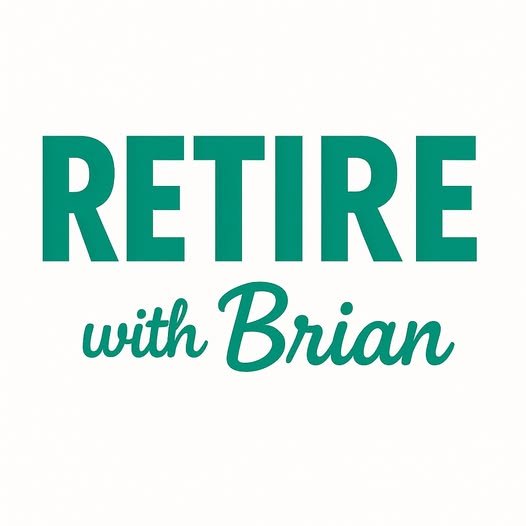Imagine getting regular dividend checks, giving you a steady income. Thousands of investors have found financial freedom with a smart dividend investing approach.
You can join them by following a simple, yet effective system. This system helps you earn weekly and monthly dividend pay checks. By investing in companies known for their consistent dividends, you can have a reliable income.
To start, join our community on Facebook. Also, catch weekly updates on YouTube. This will help you on your path to financial freedom.
Key Takeaways
- Generate regular income through dividend payments
- Invest in established companies with a history of paying consistent dividends
- Follow a simple and effective dividend investing system
- Join a community of investors for support and guidance
- Achieve financial freedom through a well-planned investment approach
The Financial Freedom Opportunity Through Dividends
Dividend investing is a way to financial freedom, offering a steady income. It’s great for those wanting to earn extra or grow their wealth.
Why Dividend Income Creates True Financial Independence
Dividend income is a strong tool for financial freedom. It gives a stable income, helping to balance market risks.
The Power of Recurring Cash Flow
Dividend investing offers a steady cash flow. This is great for covering expenses or growing your portfolio.
How Dividends Protect Against Market Volatility
Dividends act as a shield against market drops. Companies with steady dividends usually have solid finances, ready for economic challenges.
Common Misconceptions About Dividend Investing
Despite its benefits, dividend investing is often misunderstood. Some think it’s only for cautious investors or offers low returns.
Dividend Myths Debunked
Many myths surround dividend investing. For example, some believe high yields are always good. But, high yields can sometimes mean a company has problems.
| Myth | Reality |
|---|---|
| Dividend investing is for conservative investors only. | Dividend investing can be suitable for a wide range of investors, from conservative to aggressive. |
| High dividend yields are always the best. | High yields can be attractive, but they can also signal potential problems. |
Why Traditional Financial Advice Falls Short
Traditional advice often focuses on capital gains, missing dividend income’s benefits. This can cause investors to miss out on regular income.
Understanding dividend investing’s true potential helps you make better financial choices.
Weekly and Monthly Dividend Pay Checks Following My System: An Overview
Learn how to get consistent weekly and monthly dividends with our system. We’ll dive into our dividend strategy and how it’s different from others.
The Core Philosophy Behind the System
Our system focuses on making your dividend income regular and lasting. It does this by carefully picking stocks and spreading out your investments.
Income Frequency Optimization
Spread your money across different dividend stocks to get income often. This means:
- Choosing stocks that pay out weekly, monthly, and quarterly
- Putting your money in the right places for the income you want
- Checking and tweaking your portfolio as needed
Yield Sustainability Analysis
It’s important to make sure your dividend yield can keep going for a long time. We look at a company’s health, past dividends, and market trends to guess future payouts.
How This System Differs from Traditional Dividend Strategies
Our system has two big benefits over old ways of investing in dividends: more frequent payments and smart diversification.
The Payment Frequency Advantage
Our system aims for weekly and monthly dividends. This means you get money more often than traditional strategies that only pay quarterly.
Strategic Diversification Approach
We spread your investments not just by sector but also by when dividends are paid. This lowers risk and keeps your income steady.
With our dividend payment strategy, you can look forward to a more stable financial future. Stay informed, diversify, and keep checking your investments to get the most from your dividend pay schedule.
Key Components of My Dividend Payment Strategy
Understanding the core elements of our dividend investing approach is key to financial freedom. To boost your dividend income, you must know the essential parts of our strategy.
Stock Selection Criteria
Picking the right dividend stocks is vital for success. Look for companies with a solid history of paying dividends.
Dividend History and Growth Patterns
When checking dividend stocks, look at their dividend history and growth. A steady record of payments and growth shows a company’s commitment to shareholders.
Financial Health Indicators
It’s also important to check a stock’s financial health. Look at the debt-to-equity ratio, interest coverage ratio, and dividend payout ratio. These show if a company can keep paying dividends.
| Financial Indicator | What It Measures | Ideal Value |
|---|---|---|
| Debt-to-Equity Ratio | A company’s level of indebtedness | Less than 1 |
| Interest Coverage Ratio | A company’s ability to pay interest on its debt | Greater than 3 |
| Dividend Payout Ratio | The percentage of earnings paid out as dividends | Between 30% and 60% |
Portfolio Allocation Principles
After picking your stocks, it’s important to allocate your portfolio well. This means finding the right mix of stocks to meet your goals and manage risk.
Sector Weighting Guidelines
Sector weighting is key in a dividend portfolio. Spread your investments across different sectors to reduce risk. For example, you might put some in REITs, some in consumer staples, and some in energy.
Payment Schedule Balancing
To get a steady dividend payment frequency, balance your portfolio’s payment schedule. Mix stocks with different payment dates for a regular income.
Risk Management Techniques
Good risk management is crucial in dividend investing. Know the risks and take steps to lessen them.
Dividend Cut Warning Signs
One big risk is a dividend cut. Watch for signs like falling earnings, rising debt, or a high dividend payout ratio.
Position Sizing Rules
Position sizing is also key to managing risk. Decide the right size for each stock in your portfolio based on your goals and risk level.
Setting Up Your Dividend Portfolio for Success
To get consistent passive income dividends, you need a solid plan. Focus on key areas to build a strong dividend investing strategy.
Essential Tools and Platforms
You’ll need the right tools and platforms to manage your portfolio well. Choose a reliable brokerage account and use research resources.
Recommended Brokerages for Dividend Investors
Look for brokerages with low fees, good investment options, and great customer service. Top choices for dividend investors are:
- Fidelity Investments
- Charles Schwab
- Vanguard
- Robinhood
Research Resources and Screening Tools
Use research tools and screening tools to find dividend stocks. Popular options include:
- Finviz
- Yahoo Finance
- Seeking Alpha
Account Types for Maximum Tax Efficiency
Knowing about different account types can lower your taxes and increase your dividend income.
Taxable vs. Tax-Advantaged Accounts
Choose between taxable or tax-advantaged accounts for your investments. Taxable accounts are flexible but taxed on dividends and gains. Tax-advantaged accounts, like IRAs and 401(k)s, offer tax breaks but have rules.
Strategic Asset Placement
Place assets in different accounts to manage taxes. Put tax-efficient investments in taxable accounts and tax-inefficient ones in tax-advantaged accounts.
Initial Capital Requirements
The capital needed to start a dividend portfolio varies based on your strategy and goals.
Starting Small: Under $10,000 Approach
If you have less than $10,000, start with low-cost index funds or ETFs. This way, you can diversify your portfolio even with limited funds.
Scaling Up: $10,000+ Strategy
With $10,000 or more, you can diversify your portfolio with individual dividend stocks. Spread your capital across sectors to reduce risk.
| Investment Amount | Strategy | Potential Investments |
|---|---|---|
| Under $10,000 | Low-cost index funds or ETFs | Vanguard Dividend Appreciation ETF, iShares Core S&P Total U.S. Stock Market ETF |
| $10,000+ | Diversified portfolio of individual stocks | Johnson & Johnson, Procter & Gamble, Coca-Cola |
Creating a Staggered Dividend Payment Schedule
To get a steady income from your dividend investments, it’s key to have a staggered payment schedule. This means mixing different dividend stocks to get consistent returns.
Combining Weekly and Monthly Dividend Stocks
When making a staggered payment schedule, mixing weekly and monthly dividend stocks is crucial. This mix helps you get a steady income all month long.
The Ideal Ratio for Consistent Income
Finding the right mix of weekly and monthly stocks depends on your financial goals. You might want more monthly stocks for stability. Add weekly stocks for more frequent income.
Balancing Yield and Payment Frequency
It’s important to match the yield of your stocks with how often they pay dividends. Stocks with higher yields might offer more income but also more risk. On the other hand, more frequent payments can give you a steady income.
Calendar Mapping for Consistent Income
Creating a personal dividend calendar helps manage your income well. It involves listing when your stocks pay dividends to know when you’ll get money.
Creating Your Personal Dividend Calendar
To make your dividend calendar, list your stocks and their payment dates. Use a spreadsheet or a financial calendar tool to keep it organized.
Filling Payment Gaps
If you see gaps in your payment schedule, add stocks that fill them. This makes your income more consistent all year.
| Month | Weekly Dividend Income | Monthly Dividend Income | Total Income |
|---|---|---|---|
| January | $100 | $500 | $600 |
| February | $100 | $500 | $600 |
| March | $120 | $500 | $620 |
Reinvestment Strategies for Compounding Growth
Choosing to reinvest your dividends or take the cash is a big decision. Reinvesting can grow your money over time, while taking the cash gives you liquidity.
DRIP vs. Manual Reinvestment
Dividend Reinvestment Plans (DRIPs) let you automatically reinvest your dividends. Manual reinvestment gives you more control over when and how you reinvest.
When to Reinvest vs. Take Income
Whether to reinvest or take your dividends depends on your financial goals and situation. Reinvesting is good for long-term growth. Taking the dividends is better if you need regular income.
Top Dividend Stocks for Weekly Payments
Many investors look for top dividend stocks that pay out weekly. These weekly payments offer a steady income. This is great for those who need money regularly or want to grow their investments.
High-Yield Weekly Dividend Options
There are many high-yield weekly dividend stocks to choose from. You can find them in Exchange-Traded Funds (ETFs) and other special investment vehicles. These options are made to give you regular income through dividends.
Exchange-Traded Funds with Weekly Distributions
ETFs that pay out dividends weekly are popular with those seeking income. They combine money from many investors to buy a variety of dividend-paying stocks. This helps spread out risk and can make your investments more stable.
Specialty Investment Vehicles
Some investments, like certain Real Estate Investment Trusts (REITs) and Business Development Companies (BDCs), also offer weekly dividends. These focus on specific areas, giving you targeted exposure.
Stability Metrics and Performance History
When picking weekly dividend stocks, look at their stability and past performance. Check how often they pay dividends and their total return. This ensures they’re reliable and meet your financial goals.
Analyzing Payout Consistency
Consistent dividend payments are key to a stock’s reliability. Look for stocks with a track record of steady or increasing dividends.
Total Return Considerations
It’s not just about the dividend yield. Total return, including any increase in stock value, is also crucial. It gives a full picture of how well an investment is doing.
Sector Diversification for Weekly Payers
Spreading your investments across different sectors is important for weekly dividend payers. This reduces risk by avoiding too much focus on one industry.
Creating Balance Across Industries
Investing in various sectors helps make your portfolio more stable. It protects against downturns in specific industries.
Avoiding Concentration Risk
It’s important to avoid putting too much into one sector or stock. This can lead to big losses if that area has a downturn.
| Sector | Typical Weekly Dividend Stocks | Risk Level |
|---|---|---|
| Real Estate | REITs | Medium |
| Finance | BDCs, Banks | High |
| Energy | MLPs | High |

By carefully choosing high-yield weekly dividend stocks, looking at stability, and diversifying, you can build a strong portfolio. This portfolio will give you steady weekly income.
Best Monthly Dividend Investments for Reliable Income
Investors often look for monthly dividend investments for a steady income. A regular dividend payout system is key for financial planning. We’ll look at different investment options for monthly income.
REITs for Monthly Income
Real Estate Investment Trusts (REITs) are great for monthly income. They let people invest in real estate without managing properties. REITs must give a big part of their income to shareholders, making them good for those seeking income.
Residential and Commercial REIT Options
Residential REITs focus on apartments and homes. Commercial REITs deal with office buildings and retail spaces. Both offer stable income but face different market challenges.
Mortgage REIT Considerations
Mortgage REITs invest in mortgages and real estate debt. They might offer higher yields than equity REITs but carry risks like interest rate changes. It’s important to check the REIT’s portfolio and management.
BDCs and Closed-End Funds
Business Development Companies (BDCs) and closed-end funds also offer monthly dividends. BDCs finance small and medium businesses, helping them get capital.
Top-Performing Business Development Companies
Some BDCs are known for steady dividend payments. Look for those with a good track record, diverse portfolios, and skilled management.
Discounted Closed-End Fund Opportunities
Closed-end funds can be bought at a discount, offering chances for profit. Research funds with stable distributions and consider their assets and management.
Preferred Stocks and Bond ETFs
Preferred stocks and bond ETFs add to a monthly income. Preferred stocks have a higher claim on assets and dividends than common stocks. Bond ETFs offer a mix of fixed-income securities.
Fixed-Income Security Selection
When picking fixed-income securities, look at credit quality, duration, and yield. Diversifying across bonds and issuers helps manage risk.
Interest Rate Risk Management
Changes in interest rates can affect fixed-income securities. To manage this, diversify by maturity and consider strategies like laddering bond portfolios.
By adding these investments to a dividend system, investors can get a steady monthly income. It’s crucial to assess each investment’s risks and returns to match financial goals.
| Investment Type | Monthly Income Potential | Risk Level |
|---|---|---|
| REITs | High | Medium |
| BDCs | High | High |
| Closed-End Funds | Medium | Medium |
| Preferred Stocks | Medium | Medium |
| Bond ETFs | Low to Medium | Low to Medium |
Join Our Dividend Investing Community
Start your journey to passive income by joining our dividend investing community. You’ll get access to lots of knowledge, expert advice, and a supportive group of investors.
Weekly YouTube Updates and Strategy Sessions
Our YouTube channel offers weekly updates on dividend investing strategies. We cover market analysis and portfolio management tips. It’s a great place to learn and improve your investment skills.
What to Expect from Our YouTube Channel
- Weekly dividend stock analysis
- Market trend updates
- Portfolio diversification strategies
How to Apply Weekly Lessons to Your Portfolio
It’s easy to apply what you learn from our YouTube channel to your portfolio. We share actionable tips and examples to guide your investment decisions.
Facebook Group Benefits and Resources
Our Facebook group is a lively community where members share their experiences and learn from each other. It’s a great place to deepen your understanding of dividend investing.
Networking with Fellow Dividend Investors
Meet experienced investors who are eager to share their knowledge. Our community is supportive and collaborative, helping you navigate dividend investing.
Exclusive Content and Support
Join our Facebook group for exclusive content, including in-depth guides and expert interviews. Our team is here to support you and answer your questions.
Success Stories from Community Members
Our community is filled with success stories of investors who have made significant financial gains. Here are a few examples:
| Member | Investment Strategy | Return on Investment |
|---|---|---|
| John D. | High-yield dividend stocks | 12% annual return |
| Emily G. | Diversified dividend portfolio | 8% annual return |
| Michael T. | REITs and dividend stocks | 10% annual return |
Real Portfolio Transformations
See how our community members have transformed their portfolios. They’ve achieved significant growth and income through dividend investing.
Lessons Learned and Best Practices
Learn from our community members’ experiences. Gain insights into the best practices and common pitfalls to avoid in dividend investing.
Join me on this journey to financial freedom. Follow us on Facebook and catch weekly updates on YouTube. Together, we can achieve a more secure financial future through a well-informed dividend investing approach and the generation of passive income dividends.

Conclusion: Your Path to Financial Freedom Through Dividends
By using my system, you can get weekly and monthly dividend checks. This method is made to help you reach financial freedom. It gives you a steady income.
You know the basics of my dividend strategy now. This includes how to pick stocks, manage your portfolio, and handle risks. By mixing weekly and monthly dividend stocks, you get a steady flow of income.
Starting your journey to financial freedom is exciting. Remember, building wealth takes time. Stick to your plan, and you’ll reach your financial goals. Let’s grow our wealth together with dividend investing.
FAQ
What is the dividend investing approach used in your system?
Our system focuses on high-quality dividend stocks and ETFs. These provide a steady income. We aim for a balanced portfolio through diversification.
How do I create a staggered dividend payment schedule?
Mix weekly and monthly dividend stocks in your portfolio. Choose a ratio based on your financial goals. Use a dividend calendar to plan payments and ensure steady income.
What are the key components of a successful dividend payment strategy?
A good strategy includes stock selection, portfolio allocation, and risk management. Look at dividend history and financial health when picking stocks. Balance your portfolio to reduce risk and increase returns.
How do I manage risk in my dividend portfolio?
Watch for dividend cut warnings and follow position sizing rules. Diversify your portfolio. Regularly check and rebalance your portfolio to manage risks.
What are the benefits of joining a dividend investing community?
Joining a community offers many benefits. You get weekly updates, strategy sessions, and a Facebook group. It’s a place to share knowledge and stay motivated.
How can I optimize my dividend portfolio for tax efficiency?
Use tax-advantaged accounts like IRAs for tax-deferred growth. Place assets strategically to reduce taxes. A tax professional can help minimize your tax liability.
What is the ideal initial capital requirement for starting a dividend portfolio?
The starting capital depends on your goals and strategy. You can start with under ,000. Then, grow your investments as you learn more.
How do I choose between DRIP and manual reinvestment for my dividend portfolio?
Choose based on your preferences and goals. DRIPs are convenient, while manual reinvestment gives you control. Think about your strategy and goals when deciding.

